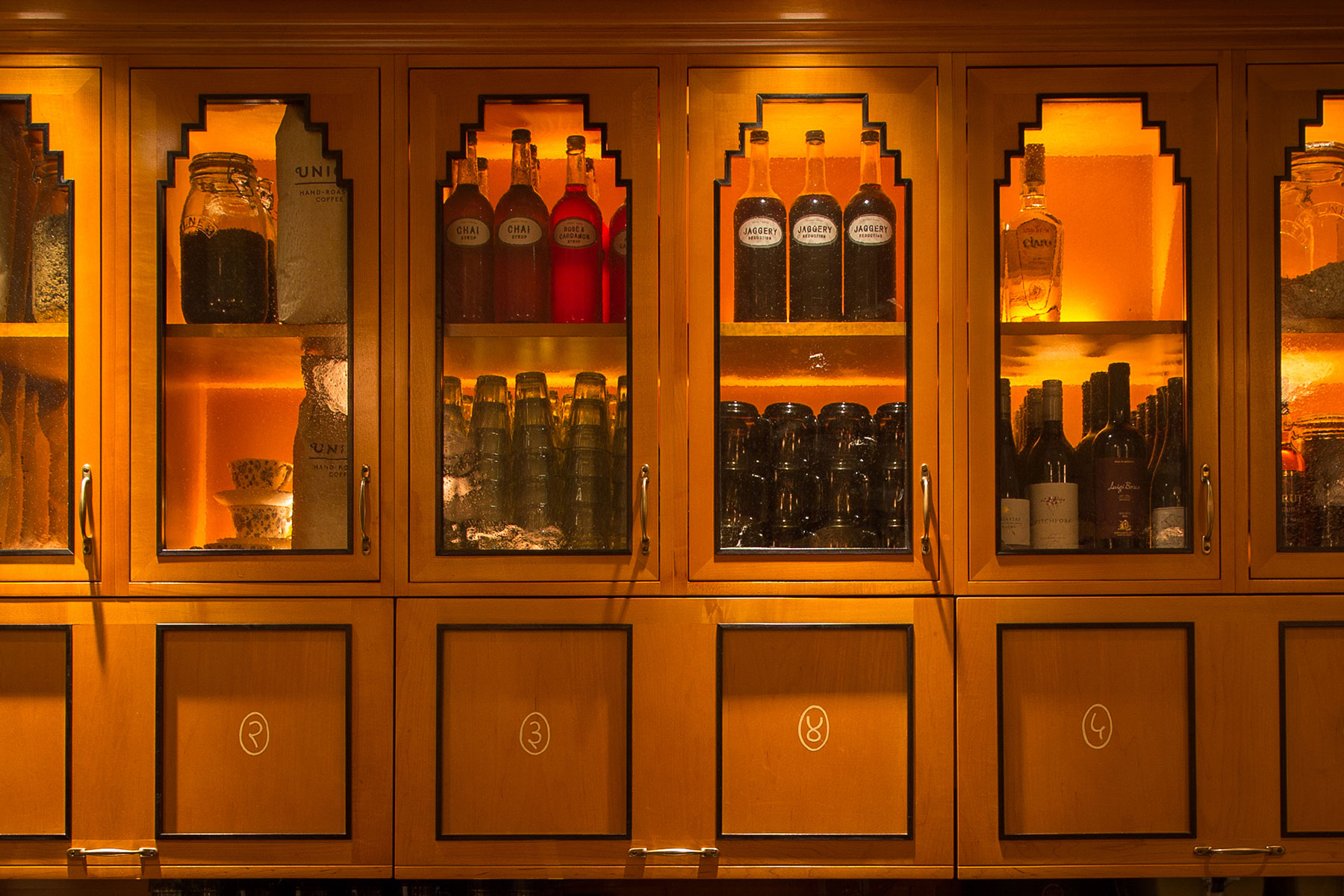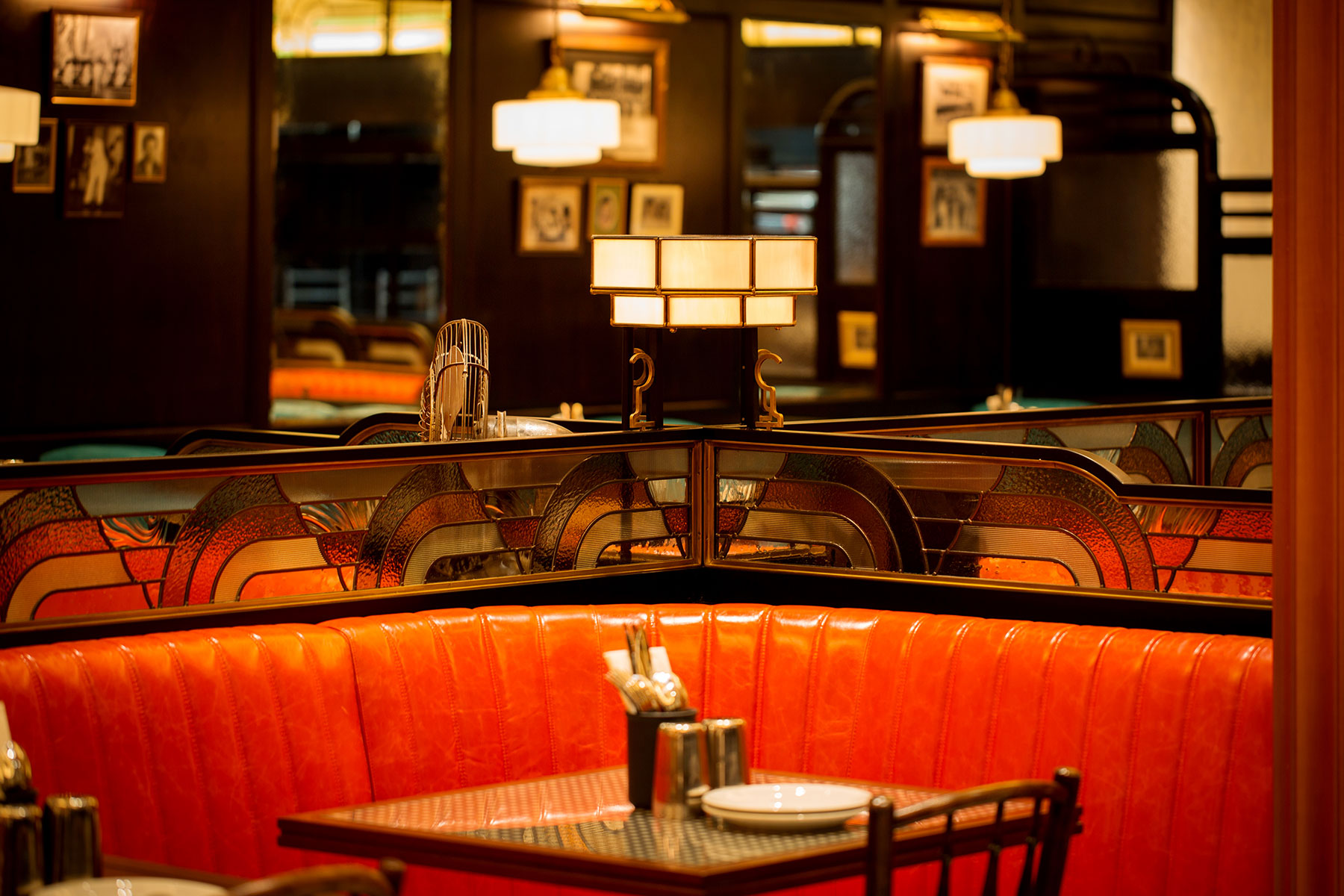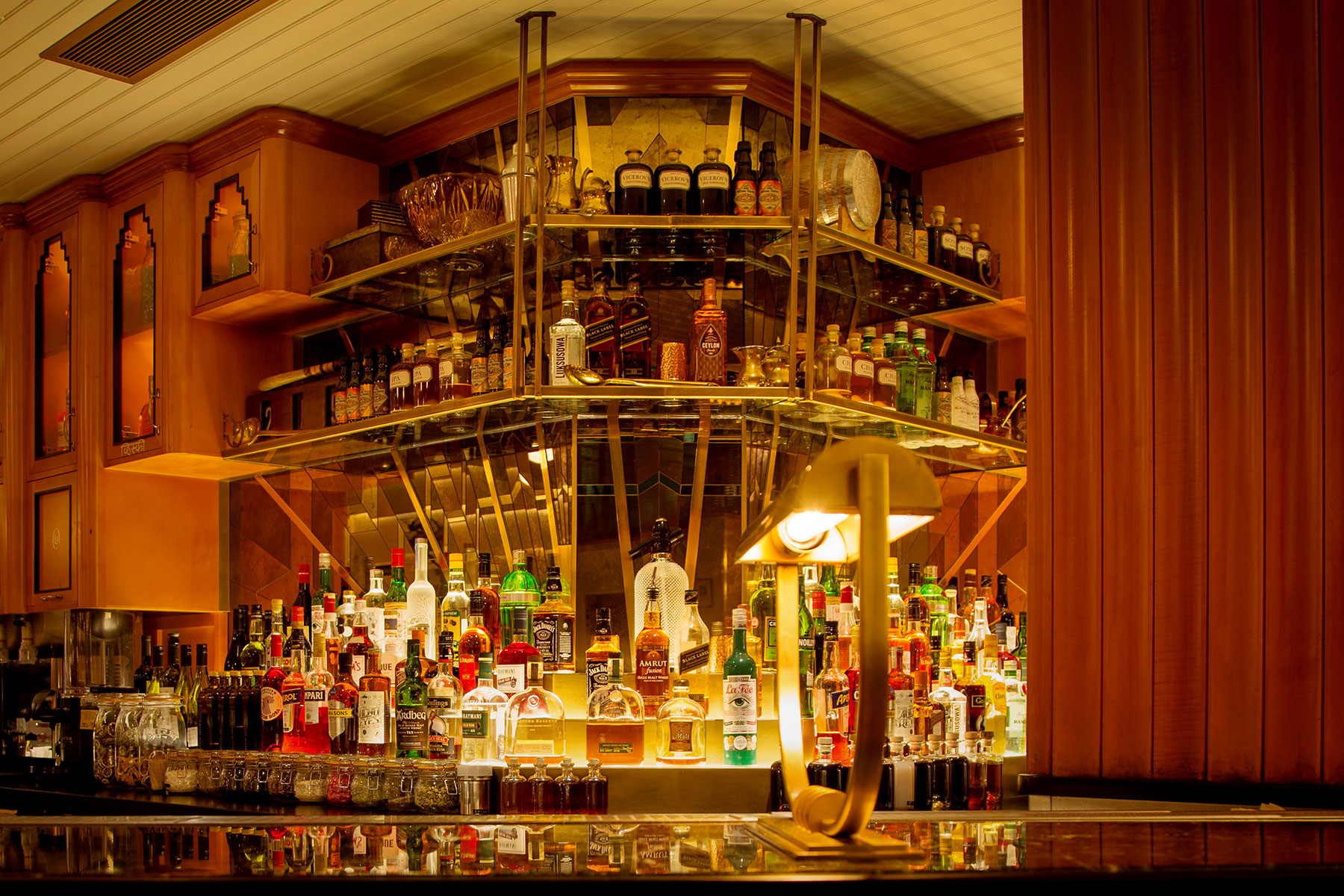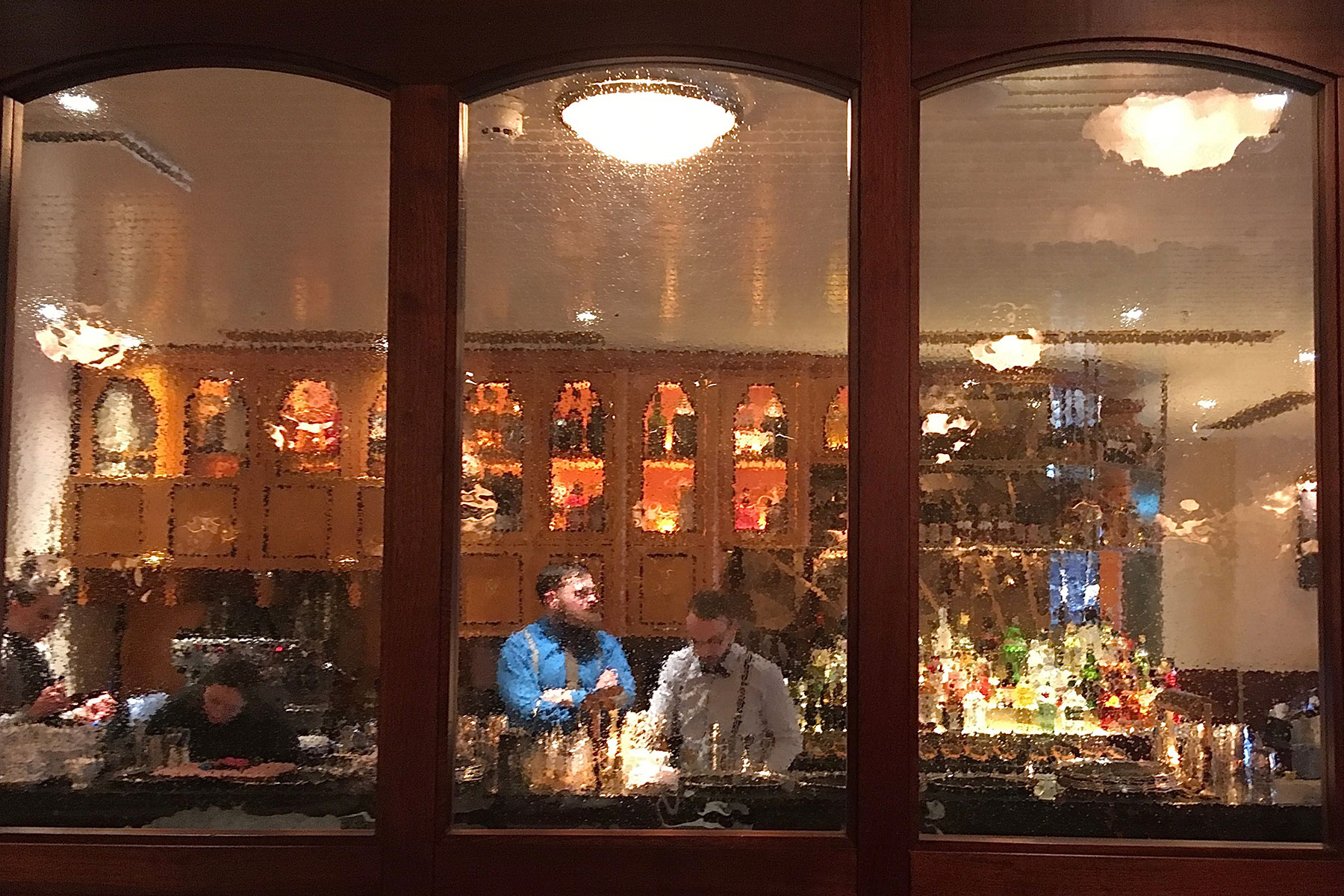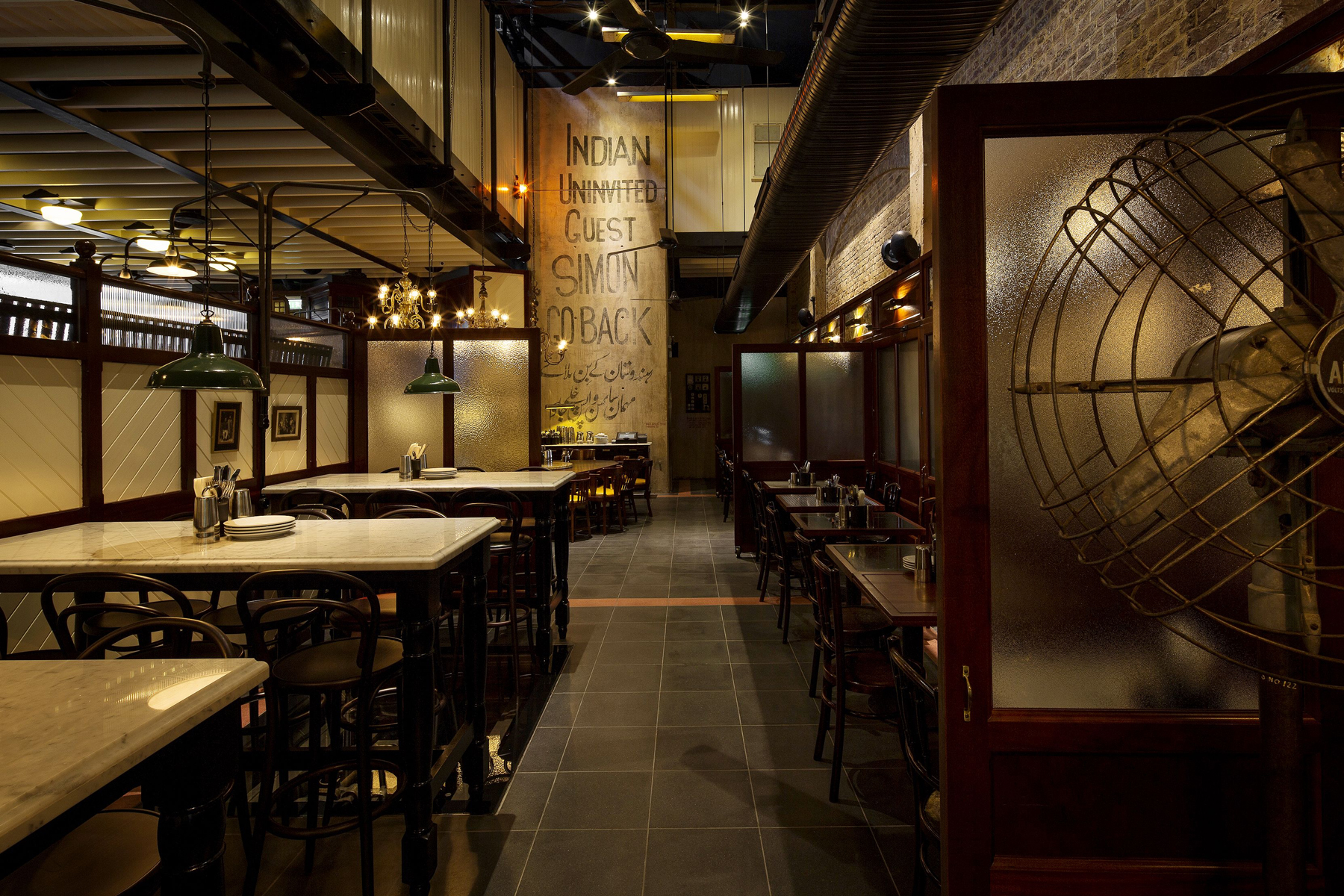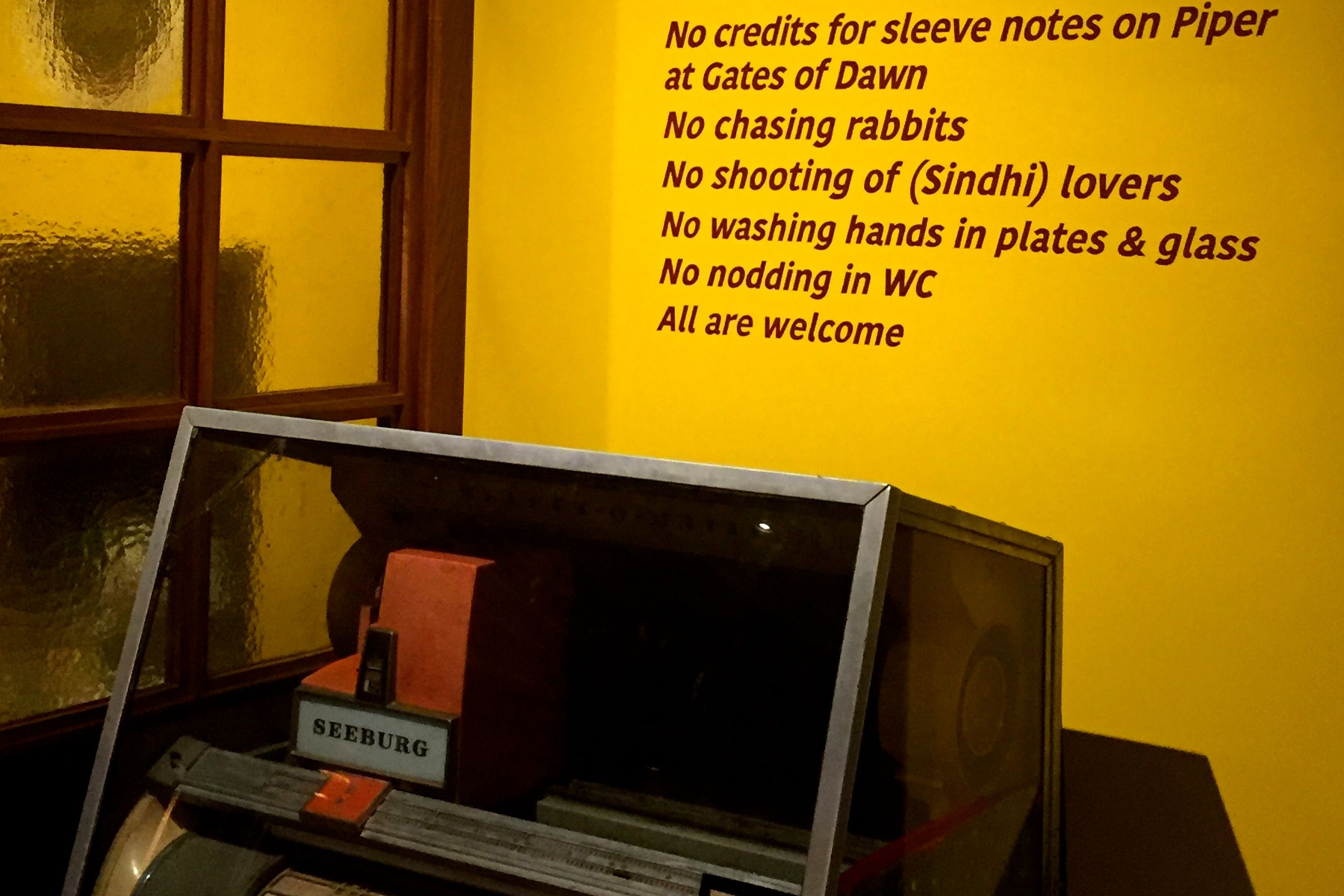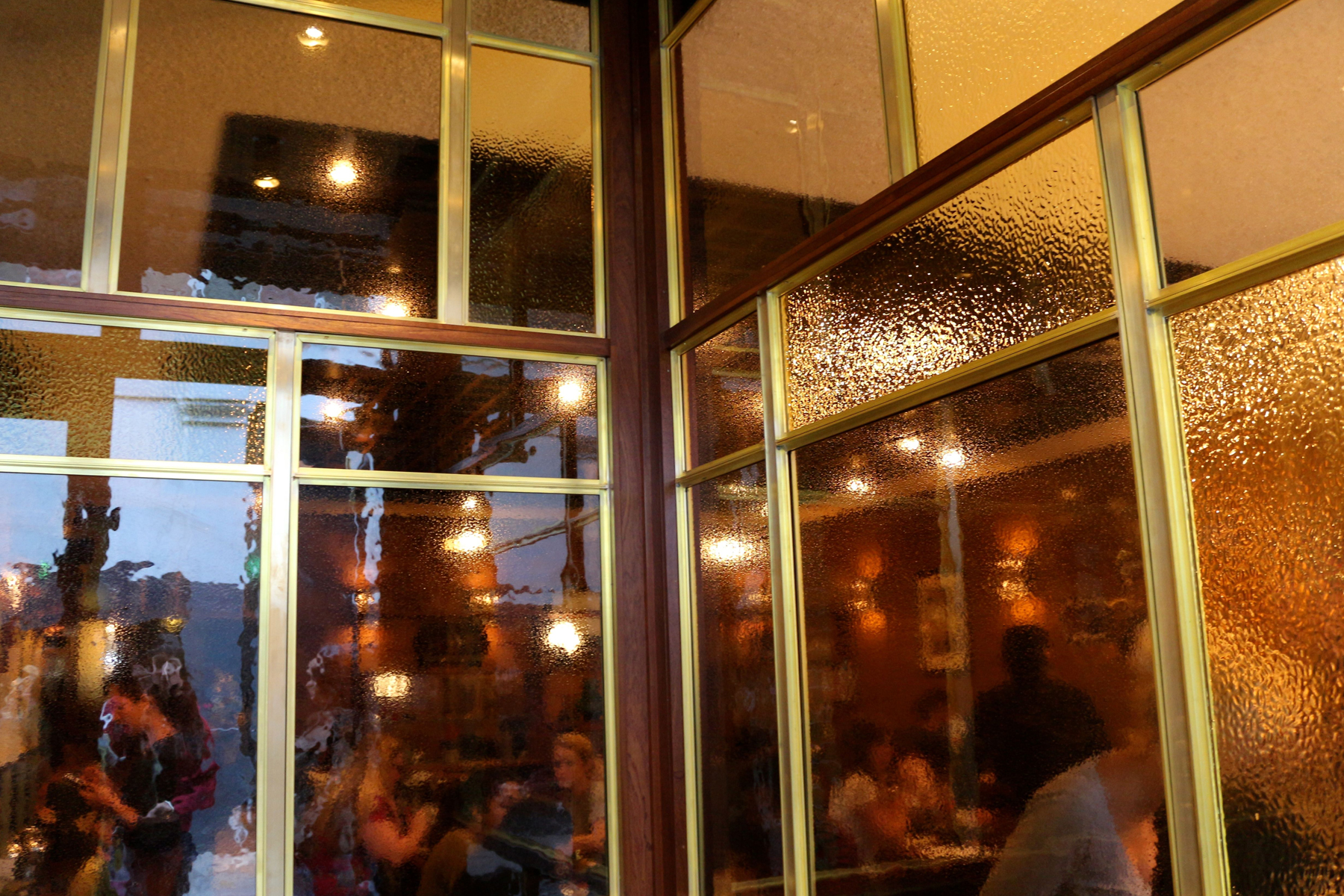
Dishoom
4 Derry Street, Kensington, London W8
Evoking the 1930’s jazz-age, the Dishoom restaurant in the Old Barkers Arcade Building features our striking gold and green leadlights in the banquette screens, and an Art Deco back bar mirror panel made of hundreds of handmade gold, silver & bronze mosaic mirrors. Subtly textured booth screens were made using our exclusive kiln-formed seedy glass.
This is the fifth London Dishoom, and it’s fair to say we have enjoyed seeing where our work will play out next, as part of essentially a theatrical backdrop in its various incarnations from Shoreditch, Kings Cross, Carnaby, and Kensington to Edinburgh.
Dishoom
King’s Cross, 5 Stable Street, London
The faded elegance of the original Irani Bombay cafés inspired the creation of Dishoom. What if a young Zoroastrian had set up a Godown in a warehouse behind a railway terminus circa 1928?
For atmospheric transformations and re-inventions of interiors, we enjoy conversations with designers about what is possible. We help provide the finishing details, setting the scene for an experience, more than just a meal. In this instance, we contributed our handmade glass, as specified by Macauley Sinclair, towards the conversion of the cavernous former railway transit shed. To provide the required authentic detailing amidst the exposed brickwork and dark brown woodwork, we experimented with clear glass in our kiln to achieve nuance, age and subtlety. Once installed, diners pass it by taking it for granted, as part of the old furnishings. And that is the point. Clear factory made glass just wouldn’t cut the mustard when used in carefully sourced antiqued room dividers or reclaimed cabinetry.
You can see through the lobby entrance and the wooden screening with mis-matching glass, here and there, as if broken panes in the 1920s had been replaced only when needed. This is achieved using clear glass with ‘movement’, and handmade opaque glass. More examples including ribbed glass elements feature behind the main bar, in the ‘kiosk’ juice bar, within the wooden screens of the maître d’ stations and alternating in the wooden rails above the seating areas. Other features made in our studios include the arched stained glass windows glimpsed at foot level in the entrance area, and last, but not least, the WCs were provided with very lightly aged vanity mirrors.
Photography by John Carey
Dishoom Carnaby
22 Kingly Street, London
This interior departs from the Indian vintage style Dishoom in King’s Cross, to a hybrid placing itself in the happening Carnaby Street culture of the late 60’s. Back at the drawing board of designers Macauley Sinclair emerged a new brief for a variety of coloured and textured glass in hip shades of yellow, gold, bronze and green.
Laminated or toughened for safety, our large glass panels are installed in screens, room dividers and the entrance lobby. In the Permit Room cocktail bar our kiln-formed bronze glass forms the sliding doors for the display cupboards. The door leading into the WC lobby is glazed with our lightly textured kiln-formed glass. The toilet doors are fitted with futuristic-looking, narrow reeded panels with curved corners, appearing as if they had been taken from the Starship Enterprise. Hey Man! Groovy glass!



